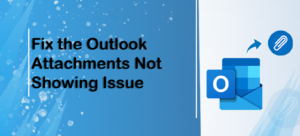How to Shorten URLs? Setting Up Your Own Shortening Solution
In the vast ecosystem of the internet, URLs (Uniform Resource Locators) act as the signposts guiding users to their desired destinations. However, the URLs themselves can sometimes be long, convoluted strings of characters, presenting challenges in sharing and presentation. Enter URL shortening, the process of condensing lengthy URLs into shorter, more manageable links.
In this article, we’ll delve into the intricacies of how to shorten URLs effectively and explore the various methods and tools available.
Understanding URL Shortening
URL shortening is the process of taking a long URL and generating a shortened version that redirects users to the original destination when clicked. The primary purpose of URL shortening is to create more concise and aesthetically pleasing links that are easier to share and remember. This process is particularly useful in contexts where character count is limited, such as social media posts, text messages, or printed materials.
How to Shorten URLs
How to shorten URL: There are several methods and tools available for shortening URLs:
- Online URL Shortening Services: There are numerous online services dedicated to URL shortening, such as Bitly, TinyURL, and Rebrandly. Users can simply paste a long URL into the service’s interface, and it will generate a shortened version. These services often offer additional features like link customization, analytics, and tracking.
- Browser Extensions: Many web browsers offer extensions or add-ons that allow users to shorten URLs directly from their browser toolbar. These extensions typically integrate with popular URL-shortening services, providing a seamless and efficient way to shorten links while browsing the web.
- API Integration: For developers and tech-savvy users, many URL shortening services offer APIs (Application Programming Interfaces) that allow for programmatic URL shortening. This enables integration with other applications, websites, or services, automating the process of generating shortened URLs.
- Custom URL Shorteners: Some organizations and businesses opt to create their custom URL shortening solutions. This involves setting up a server-side script or service that handles the redirection of shortened URLs. Custom URL shorteners offer greater control, customization, and branding opportunities.
Methods of URL Shortening
There are several methods and tools available for shortening URLs, catering to a diverse range of user preferences and requirements:
- Online URL Shortening Services: These web-based services, such as Bitly, TinyURL, and Rebrandly, provide user-friendly interfaces for shortening URLs. Users can simply paste a long URL into the service’s interface, and it will generate a shortened version, often with additional features like customization and analytics.
- Browser Extensions: Many web browsers offer extensions or add-ons that enable users to shorten URLs directly from their browser toolbar. These extensions typically integrate with popular URL-shortening services, providing a seamless and efficient way to shorten links while browsing the web.
- API Integration: For developers and tech-savvy users, many URL shortening services offer APIs (Application Programming Interfaces) that allow for programmatic URL shortening. This enables integration with other applications, websites, or services, automating the process of generating shortened URLs.
- Custom URL Shorteners: Some organizations and businesses opt to create their custom URL shortening solutions. This involves setting up a server-side script or service that handles the redirection of shortened URLs. Custom URL shorteners offer greater control, customization, and branding opportunities.
The Significance of URL Shortening
URL shortening has become a ubiquitous practice in the digital age, offering a multitude of benefits that enhance the sharing and presentation of web links:
- Simplicity and Convenience: Shortened URLs are easier to share, type, and remember, particularly in contexts where character count is limited, such as social media posts or text messages.
- Aesthetics: Shortened URLs are visually cleaner and more appealing, improving the overall presentation of content in various online and offline mediums.
- Usability: Shortened URLs make it easier for users to navigate and interact with web content, reducing the likelihood of errors or typos when typing URLs manually.
- Tracking and Analytics: Many URL shortening services offer tracking and analytics features, allowing users to monitor link performance, track engagement, and gain insights into audience behavior.
Best Practices for URL Shortening
When shortening URLs, it’s essential to follow best practices to ensure optimal results:
- Choose a reputable URL shortening service: Select a trusted and reliable URL shortening service that prioritizes user privacy and security.
- Customize shortened URLs: Whenever possible, customize shortened URLs with relevant keywords or branding elements to enhance recognition and branding.
- Monitor link performance: Regularly track metrics such as click-through rates, geographic location of users, and referral sources to gauge the effectiveness of shortened links.
- Be mindful of link expiration: Some URL shortening services offer the option to set expiration dates for shortened links, ensuring that they remain active only for a specified period.
- Educate users: Provide clear instructions on how to recognize and interact with shortened URLs to avoid confusion or suspicion of spam or phishing attempts.
Conclusion
URL shortening is a valuable technique for simplifying and enhancing the sharing and presentation of web links. By condensing lengthy URLs into shorter, more manageable links, URL shortening facilitates seamless navigation across the digital landscape. Whether you’re a casual internet user, a business owner, or a developer, mastering the art of URL shortening can greatly improve your online experience and efficiency. With the myriad of tools and methods available, anyone can become adept at shortening URLs effectively and responsibly.
By condensing lengthy URLs into shorter, more manageable links, URL shortening facilitates seamless navigation across the digital landscape, improving the overall user experience. Whether you’re a casual internet user, a business owner, or a developer, mastering the art of URL shortening can greatly enhance your online efficiency and productivity. With the diverse array of methods and tools available, anyone can become proficient at URL shortening, unlocking the full potential of the web concisely and efficiently.


















It’s actually very complicated in this active life to listen news on Television, thus I just use the web for that purpose, and get the latest information.